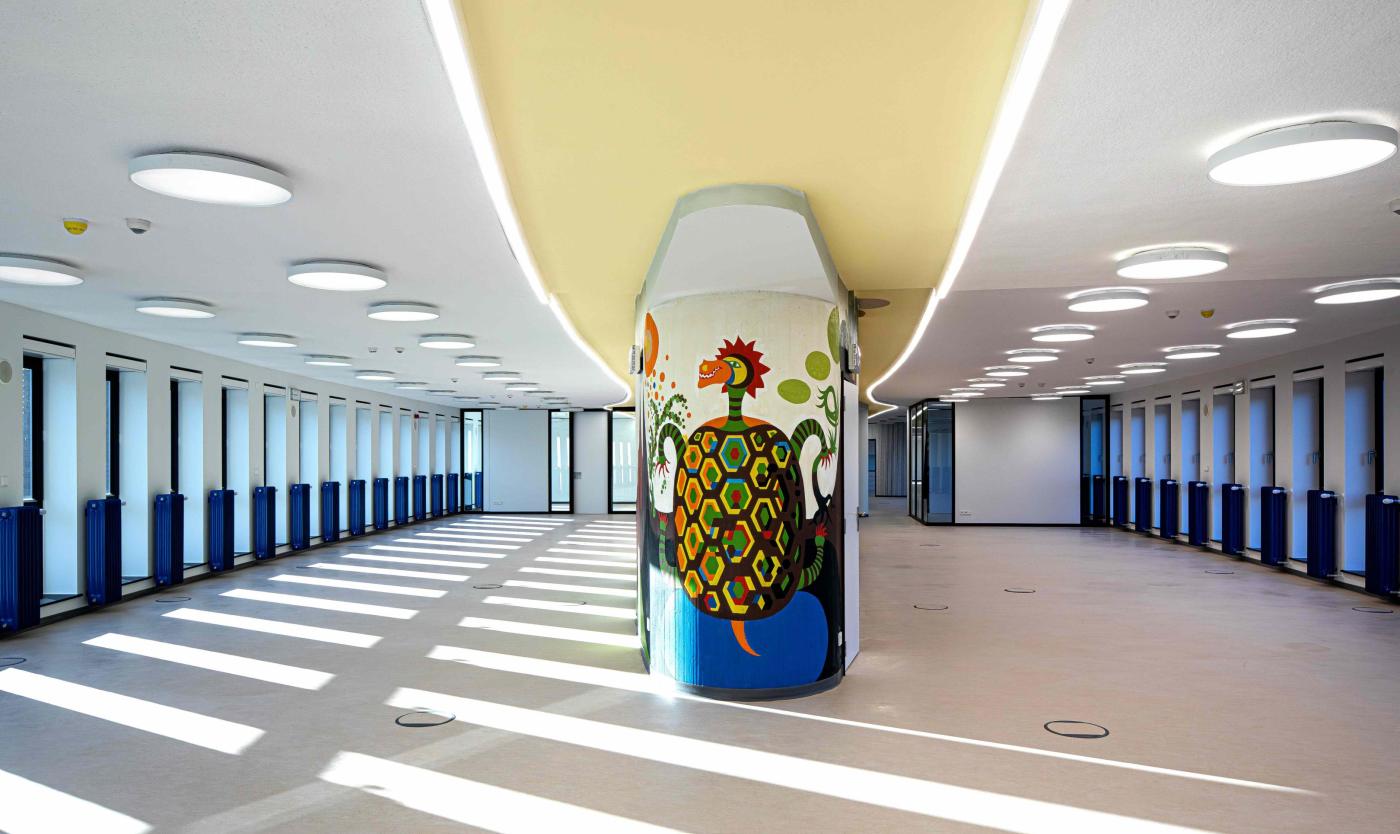
The rectorate of the Vrije Universiteit Brussel, designed by Renaat Braem (1910–2001), is one of the capital’s most striking buildings. Since its completion in 1976, its elliptical shape, monumental murals and symbolism have captured the imagination. On 12 December 2024, after a major renovation, the building was officially reopened. What did it represent then, how is it experienced today, and what future lies ahead?
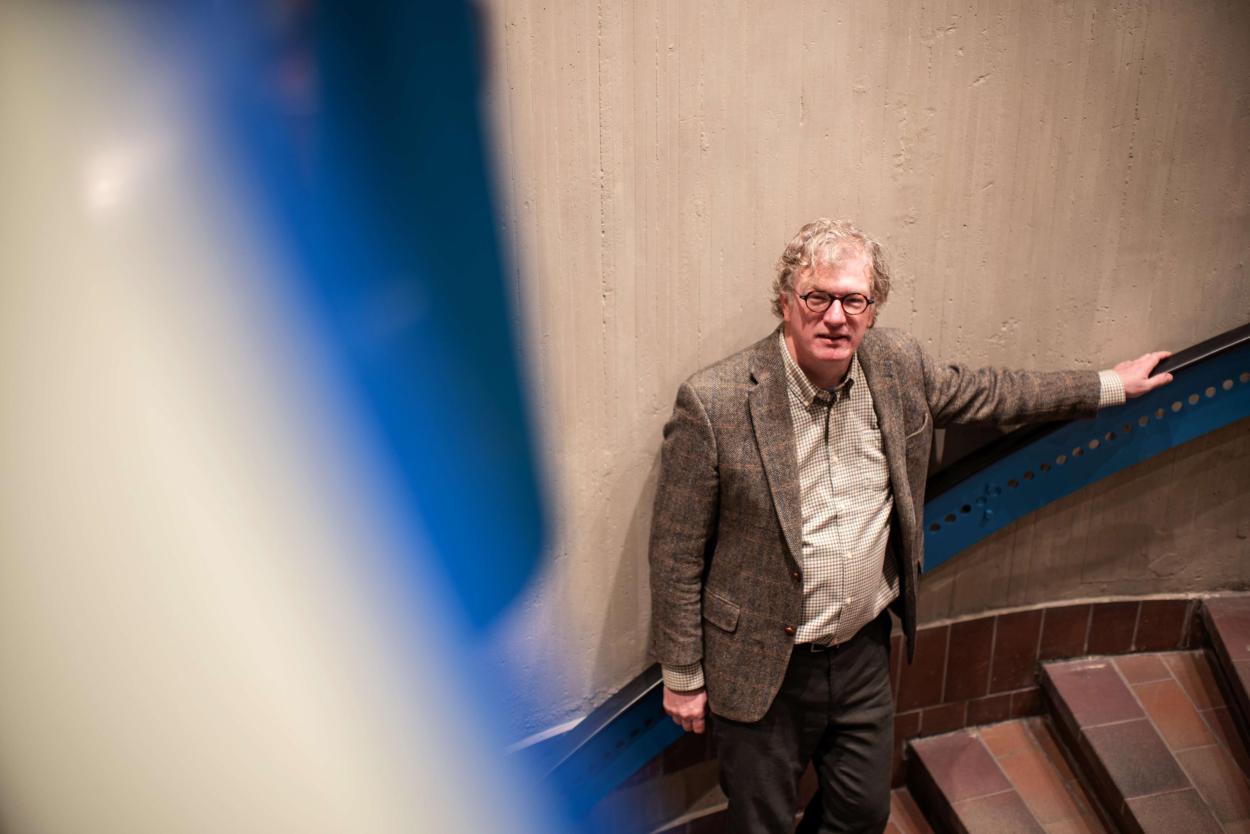
Rik Röttger
Early years of vision
Rik Röttger (CAVA, archivist)
“The Braem Building was one of the first buildings on the VUB campus. From the outset, Braem wanted a prestigious project with a deeper message and a striking form. He originally proposed three circles and a pond, but budget constraints reduced this to an ellipse. Few know that well into the 1980s Braem, together with his wife and a foreign muralist, painted 500 metres of murals. He designed the interior as a single open landscape office – far too modern for its time, because walls and small offices soon appeared.”
But the Braem Building was never just a place of governance and symbolism. It also became the stage for student protest. In the 1970s and 1990s, the rectorate was repeatedly occupied by students opposing tuition fee increases. The campaign “No to the 10,000!” (1978–79) is still etched in collective memory. Students brought daily life at the heart of the university to a standstill, demanding education remain accessible. In the entrance hall and corridors, among Braem’s murals, they debated, slept and organised actions. The building thus became not only a temple of science, but also an arena where VUB’s free-thinking spirit loudly and visibly took shape.
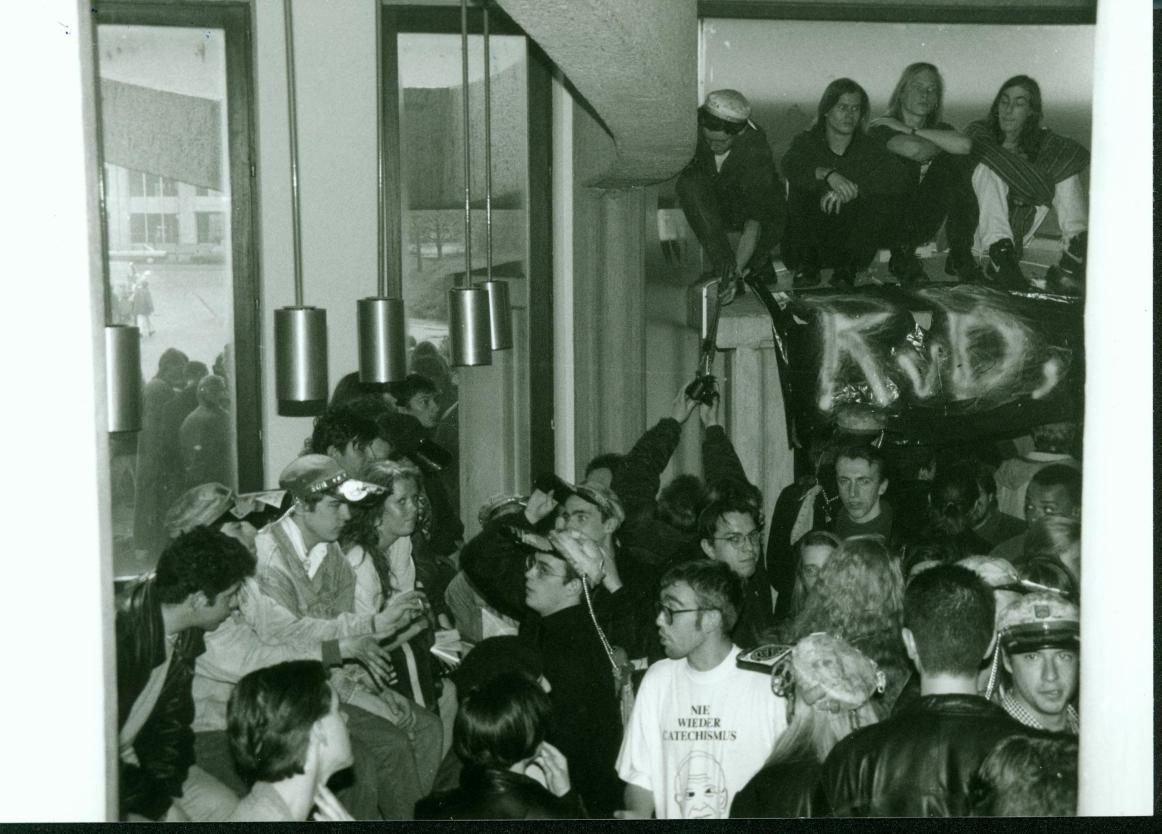
Occupation of the Braem Building entrance hall by students protesting tuition fee increases, 1994 (photo by Egwin Gonthier, CAVA)
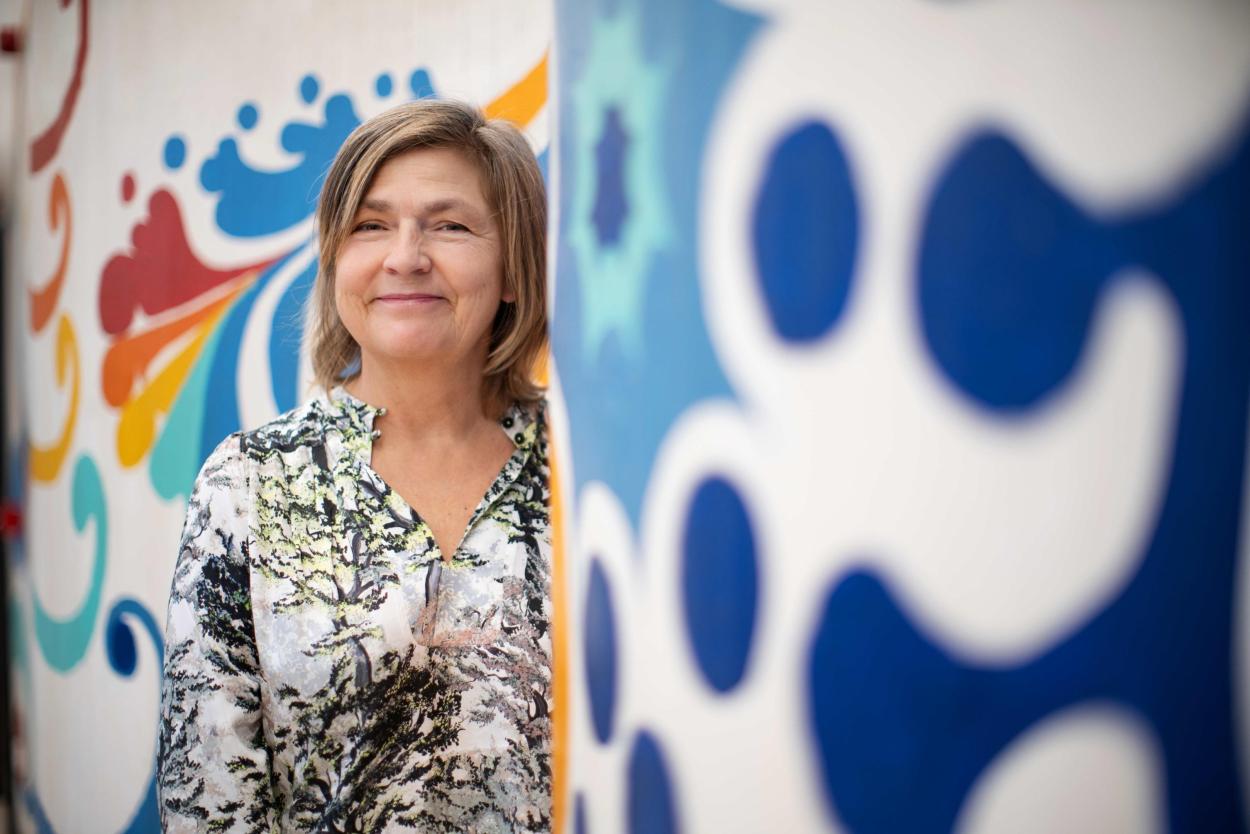
Charlotte Nys
Charlotte Nys (engineer-architect, VUB alumna)
“The Braem Building embodies Braem’s worldview. He wanted everyone walking through it to learn how the world works and feel able to tinker with it themselves. Its elliptical form, murals and canopy show his evolution from rational modernism to organic design inspired by nature. He called it a ‘temple of science’, the perfect expression of the VUB. Braem believed architecture could improve society and quality of life. This building is tangible proof of that: an instrument of social change that still inspires. In Belgium, it’s a milestone in architectural history. Internationally, he broke through less, since he remained rooted in the local context – but that is precisely what makes this building special. It’s a monument of social engagement and daring, showing how architecture fosters cohesion and happiness.”
Tony Tillez (VUB’er)
“Even before construction, I remember the various designs – one even featured mushrooms. In the end, this elliptical office landscape was chosen, although individual offices quickly followed. A curious hierarchy emerged: the higher your position, the more little windows your office had. Originally, Braem envisioned a reception space with beautifully tiled floors on the first floor, but that too gave way to offices. Thankfully, those tiles have now been restored. There are countless memories: the lift that didn’t reach the car park, the royal visit where a student shouted ‘Long live the republic!’, and encounters with Braem himself – an eccentric man, as idiosyncratic as his buildings. For me, the ground floor was always the finest place, with the most freedom and contact. The Braem Building was not just a workplace all these years, but part of the university’s soul.”
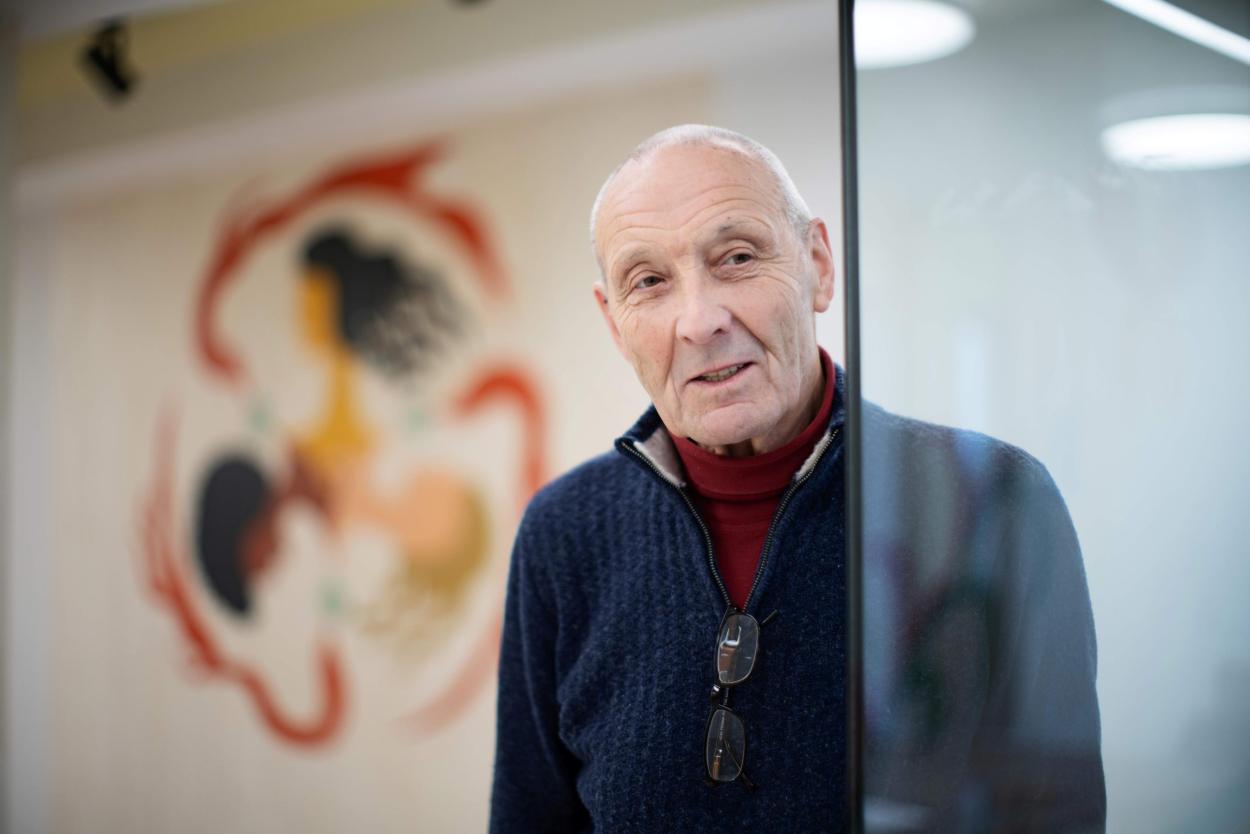
Tony Tillez
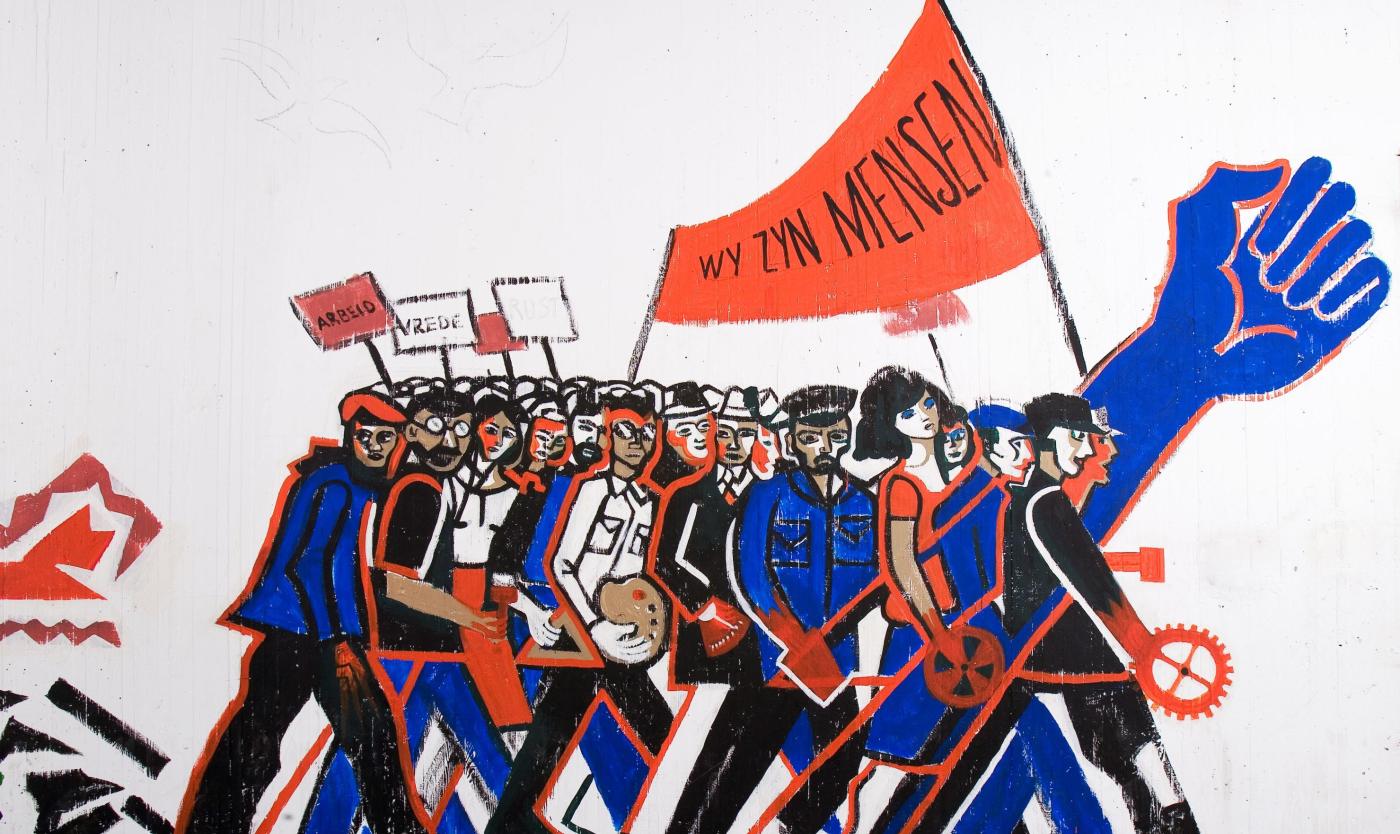
Braem revived
Fabian Rasson (restorer, Ornament, VUB alumnus)
“Twenty years ago, as a student, I discovered the murals. With my partner I researched them, and later we were able to restore them. They were often damaged: walls built against them, traces of coffee trolleys, yellowed by smoke and covered with too much varnish. We cleaned and restored them meticulously – a Herculean task that took a year with ten people. The story Braem painted is extraordinary: from the origins of life to ultimate freedom and wisdom. The higher you go in the building, the further the evolution progresses. That he developed this across almost 1,200 square metres is unique. For me, these murals are the core of his oeuvre, a highlight confirming their value in Belgian architecture. They make the building not just iconic, but an experience in itself.”
Jeanine Lambrecht (Emeritus Professor of Art History, VUB)
“From the beginning, the Braem Building was a landmark. Braem designed a ‘sculpture habitée’ – a habitable sculpture of the primal mother, radiating the university’s values. He believed architecture could improve people by improving their environment. That’s why he chose an ellipse: no straight lines, because those turn people into soldiers. The ellipse unites opposites and refers at the same time to a Doric column. But Braem kept it horizontal, so the building would not become an ivory tower. He placed it across the Generaal Jacqueslaan to maximise visibility. Even the canopy carried meaning, with symbols and the VUB’s Geuzen coat of arms, accidentally mirrored in concrete. The murals are his life’s work: the story of humanity’s origins to the free community. The Braem Building perfectly embodies VUB’s humanist spirit, where art, science, emotion and reason come together.”
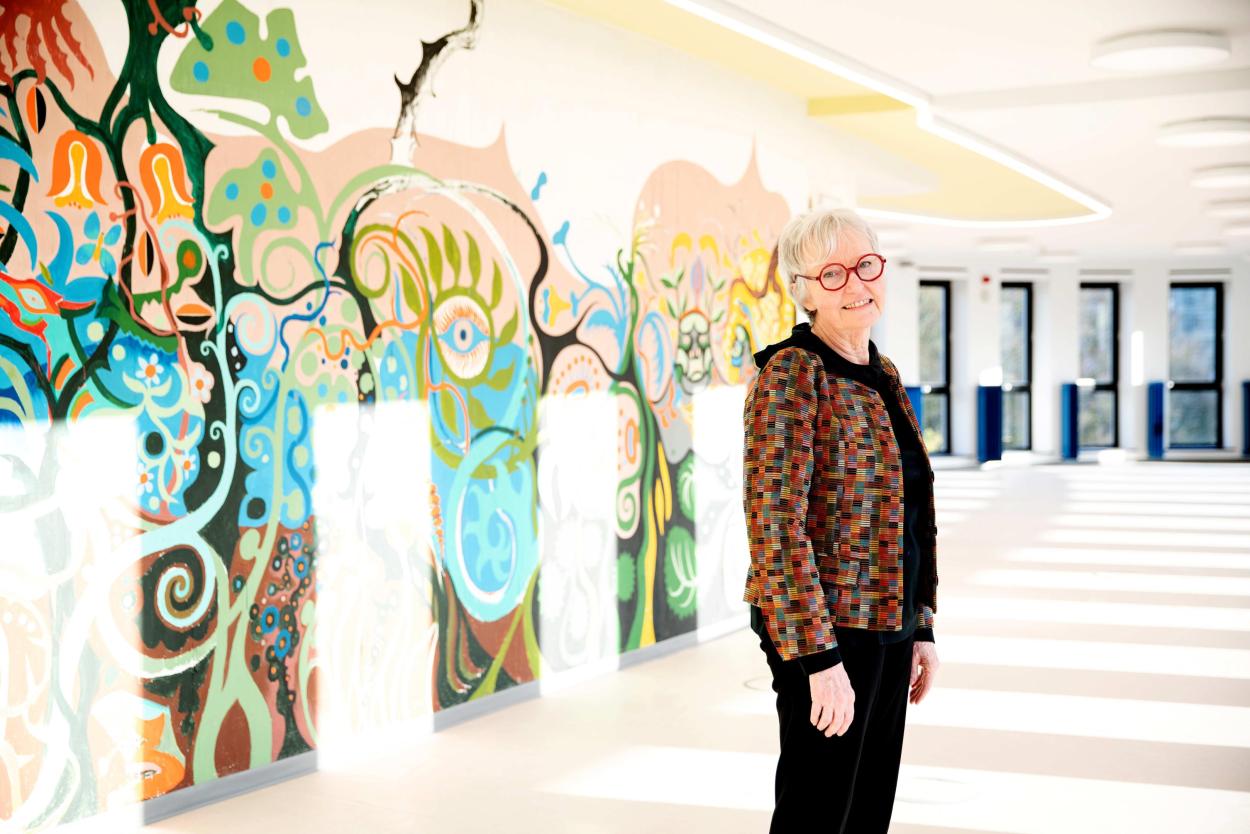
Jeanine Lambrecht
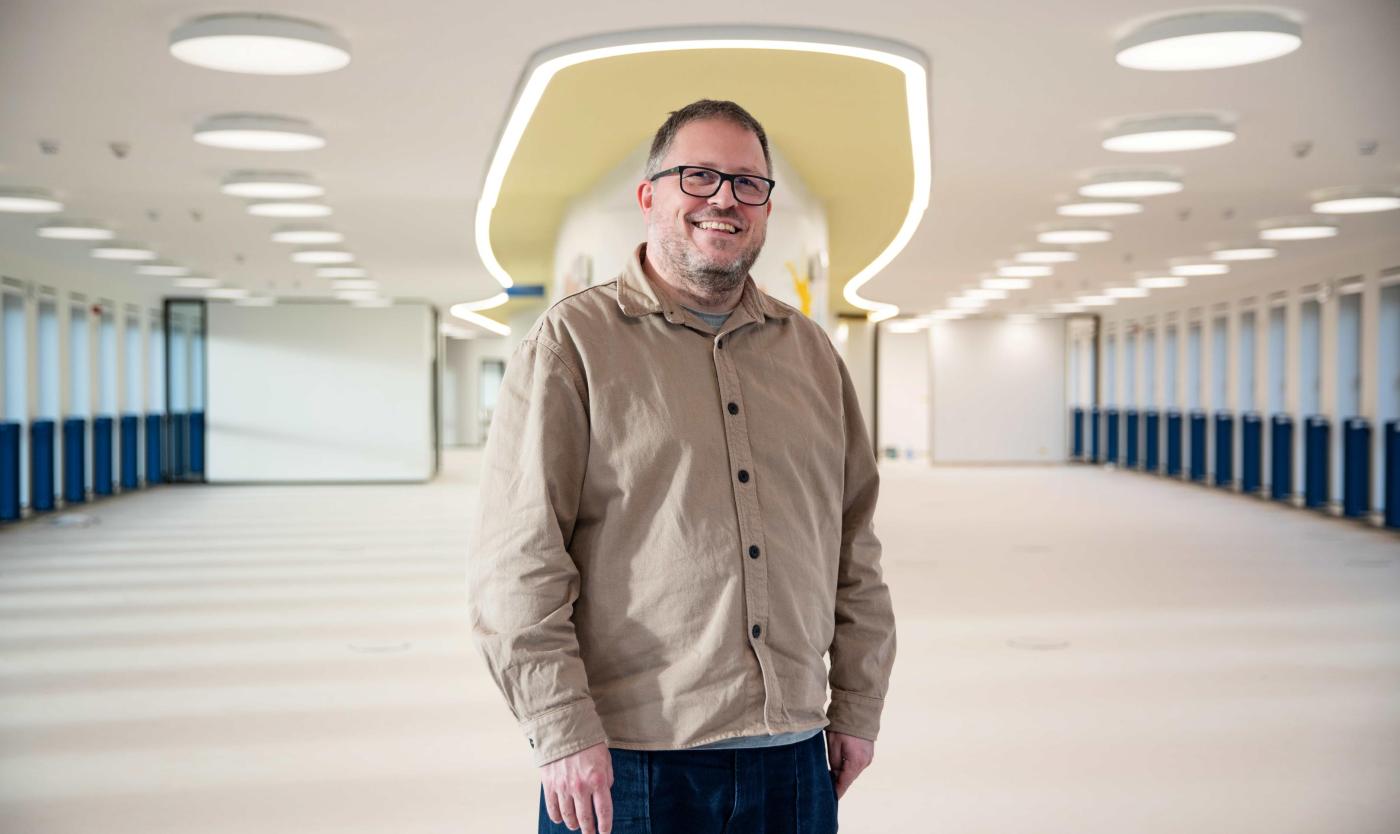
Bart Sibiel
Looking ahead
Bart Sibiel (Infrastructure Office, VUB)
“When renovation began, the building turned out to be in much worse condition than expected: poor insulation, outdated systems, inaccessible lifts, and cubicles instead of Braem’s open space. We constantly had to balance heritage preservation with modern sustainability requirements. Sometimes that meant replacing rather than restoring windows. The architectural firm Origin guided this process with care. Today, the upper floors are once again open-plan offices, while the ground and first floors have spaces for the entire community. Everyone can now experience the building in their own way. By restoring its original splendour and giving it a modern update, the Braem Building is more than ever the symbol of the VUB community. It reflects our free-thinking identity and commitment – something we can be proud of.”
Jurre Smets (VUB student)
“For me, the Braem Building fits perfectly among the artworks and buildings that express VUB’s independent spirit. It’s timeless: you can’t pin a style on it, which makes new students sometimes see it as modern. The repetitive framework, cigar shape, sober exterior and richness inside – with staircase and murals – almost play a game with the viewer. You have to go to the heart of the building to fully understand it. Many students know it as a landmark but don’t dare go inside. I felt the same, until I really discovered it. Since then, I feel more connected to the VUB community. I’d recommend everyone visit at least once: it’s inspiring and strengthens your bond with the university.”
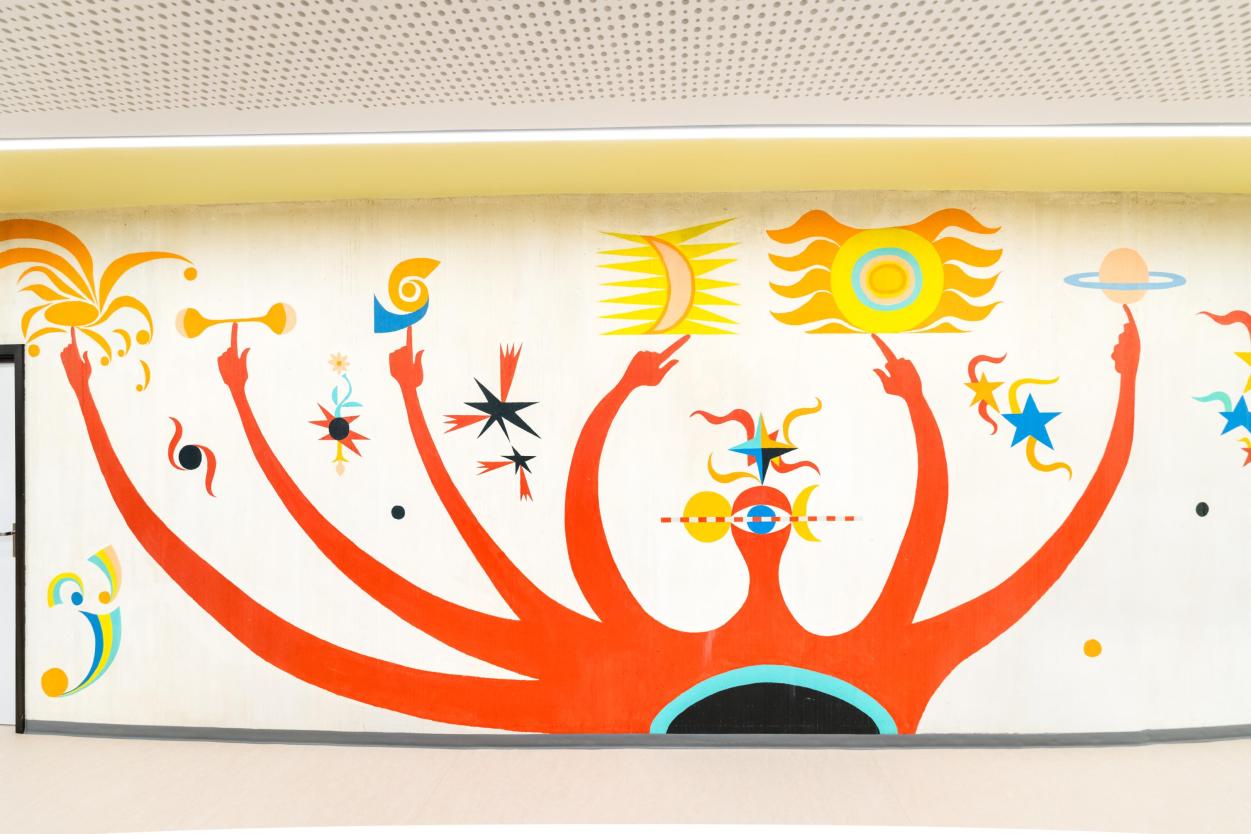
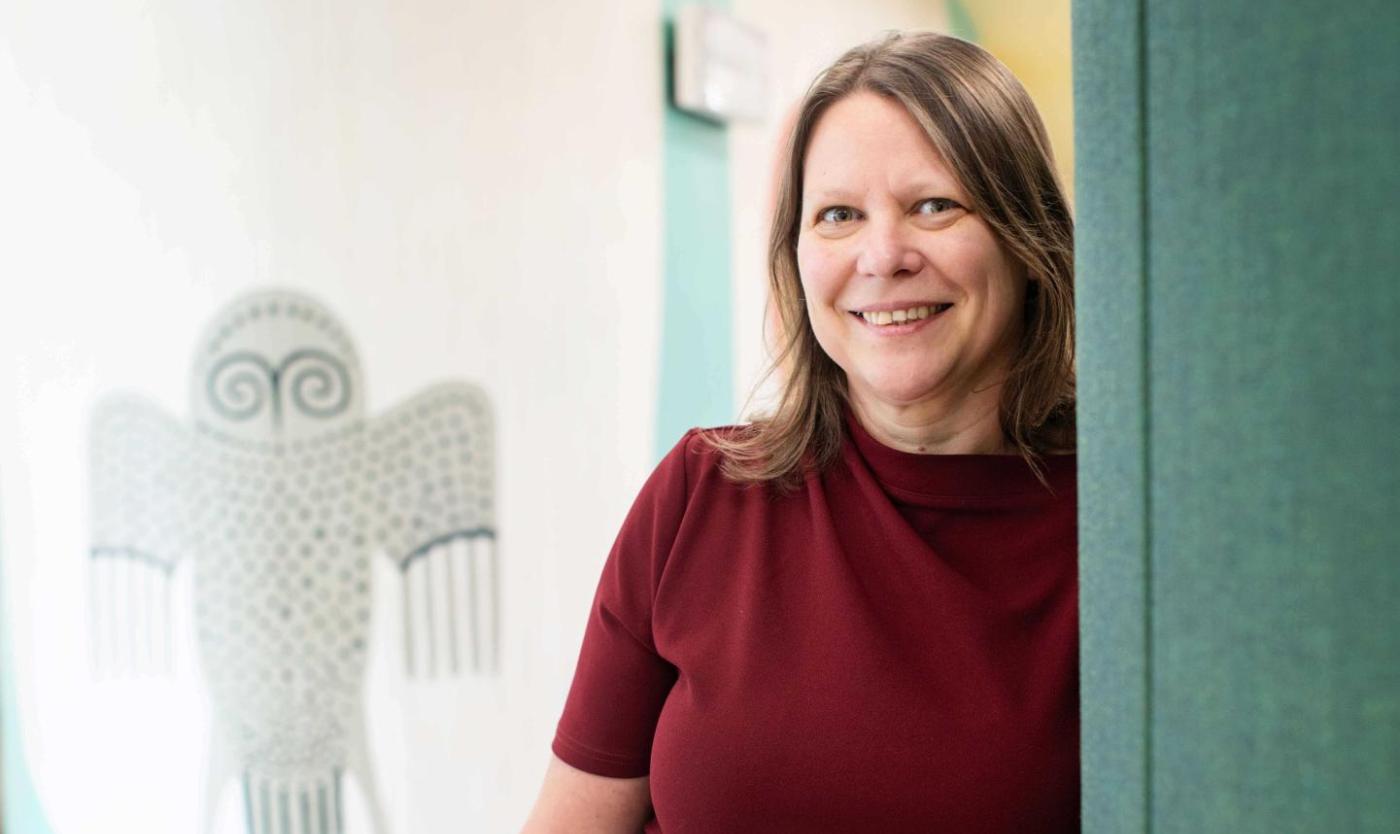
Vanessa De Cock
Vanessa De Cock (Director of the Rectorate, VUB)
“My first memory goes back to my student days, though I never set foot in the Braem Building then. In 1997 I came for a job interview, and since then I’ve worked on almost every floor. What makes it special is its openness: the rector’s office has thirteen windows, offering a wide view of the campus. Elsewhere too, there’s abundant light and transparency. With the renovation, the floors have been returned to open-plan offices, just as Braem intended. That creates connection and closeness with colleagues. What makes my spot extra special? I sit on the fifth floor, next to the rector’s office, overlooking the mural of the owl – symbol of wisdom. I’m proud of that. It gives every working day a unique setting.”

